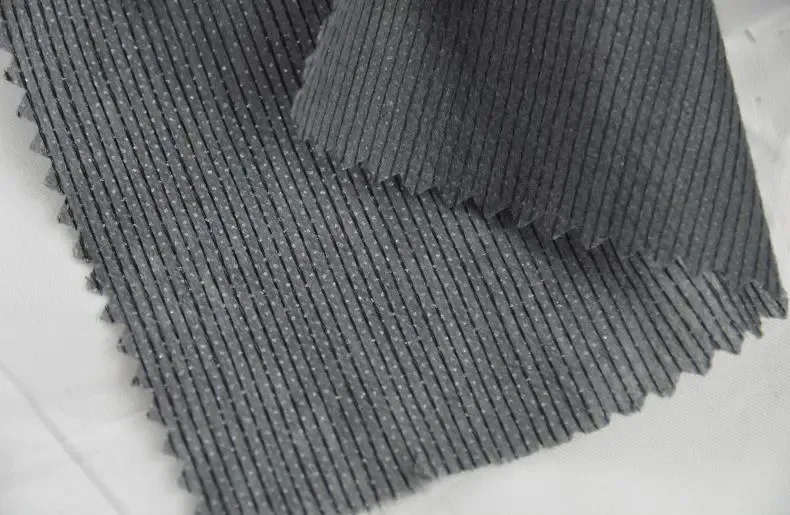Enhancing Every Garment
Weaving Woven Interlining knitted fabrics can use a wide range of raw materials, including cotton, wool, silk, hemp, chemical fiber, and their blended yarn or cross yarn. The knitted material is soft, in addition to good wrinkle resistance and breathability, but also has greater extensibility and elasticity, suitable for underwear, tights and sportswear. After changing the structure and improving the dimensional stability, the knitted fabric can also be used as outerwear and mattresses. The model of woven clothing is generally larger than the area needed to wrap the human body, that is, there is a certain amount of looseness relative to the human body; while the knitted clothing depends on the fabric structure used, if the fabric with special elasticity and the use of The yarn is related to the organizational structure Not only does it leave no looseness when designing the template, its sample size can be the same as the human girth size, or it can be reduced in consideration of the elastic coefficient. The curling of knitted fabrics is the phenomenon of edge fabric wrapping due to the disappearance of the stress in the edge loops of the fabric. Hemming is the shortcoming of knitted fabrics.

It can cause uneven seams of garment pieces or size changes of garment edges, and ultimately affect the overall shape of the garment and the size of the garment. But not all knitted fabrics have hemming properties, but only fabrics with individual weaves such as weft jerseys. For this kind of fabric, you can pull the edges and insert ribs by adding dimensions when designing the pattern. Or piping and inlaid adhesive interlining strips on the edge of the garment. The hemming of some knitted fabrics has been eliminated during the finishing process of the fabric, which avoids the trouble of template design. It needs to be pointed out that many designers can use the fabric's curling properties to design them on the neckline and cuffs of the model, so as to give the clothing a special appearance style, which is refreshing.Especially in the knitting of shaped clothing, it can also use its curling to form unique patterns or dividing lines. Knitted fabrics are different from woven fabrics in style and characteristics. The style of clothing should not only emphasize the advantages of the fabrics, but also overcome its shortcomings.
Due to the dispersibility of individual knitted fabrics, when designing and making patterns, please pay attention not to use too many exaggerated techniques for some knitted fabrics. Try not to design roads and cutting lines as much as possible. The stitching should not be too many to prevent knitting loops. It will affect the wearability of the clothing, and the simple and soft lines should be used in harmony with the soft fit style of knitwear. Knitted fabrics can be woven into grey fabrics, cut and sewn into various knitted products; they can also be woven directly into fully or partially formed products, such as socks, gloves, etc. In addition to underwear, outerwear, socks, gloves, hats, bed sheets, bedspreads, curtains, mosquito nets, carpets, laces and other clothing, living and decorative fabrics, knitted fabrics are also widely used in industries, agriculture, and medical and health fields.
Such as filter cloth for dust removal, high pressure pipes for oil and gas transmission, liner cloth for rubber and plastic industries, oil fences for oil ports, safety nets for construction, packaging bags for agricultural and sideline products, low pressure hoses for irrigation and fertilization, crops Cutting nets, nets for protecting bank slopes, fishing nets, artificial blood vessels, artificial heart valves, bandages, knee pads, etc. The disadvantage of knitted fabrics is that it is easy to snag and the size is difficult to control. Knitted fabric has good elasticity, and can minimize the seams, gathers, and splices designed for modeling when designing the model. Secondly, knitted fabrics are generally not suitable to use the techniques of return and exfoliation, but to use the elasticity of the fabric itself or the appropriate use of folds to fit the body curve. Then the stretchability of the fabric becomes an important basis in the design and production of the model.